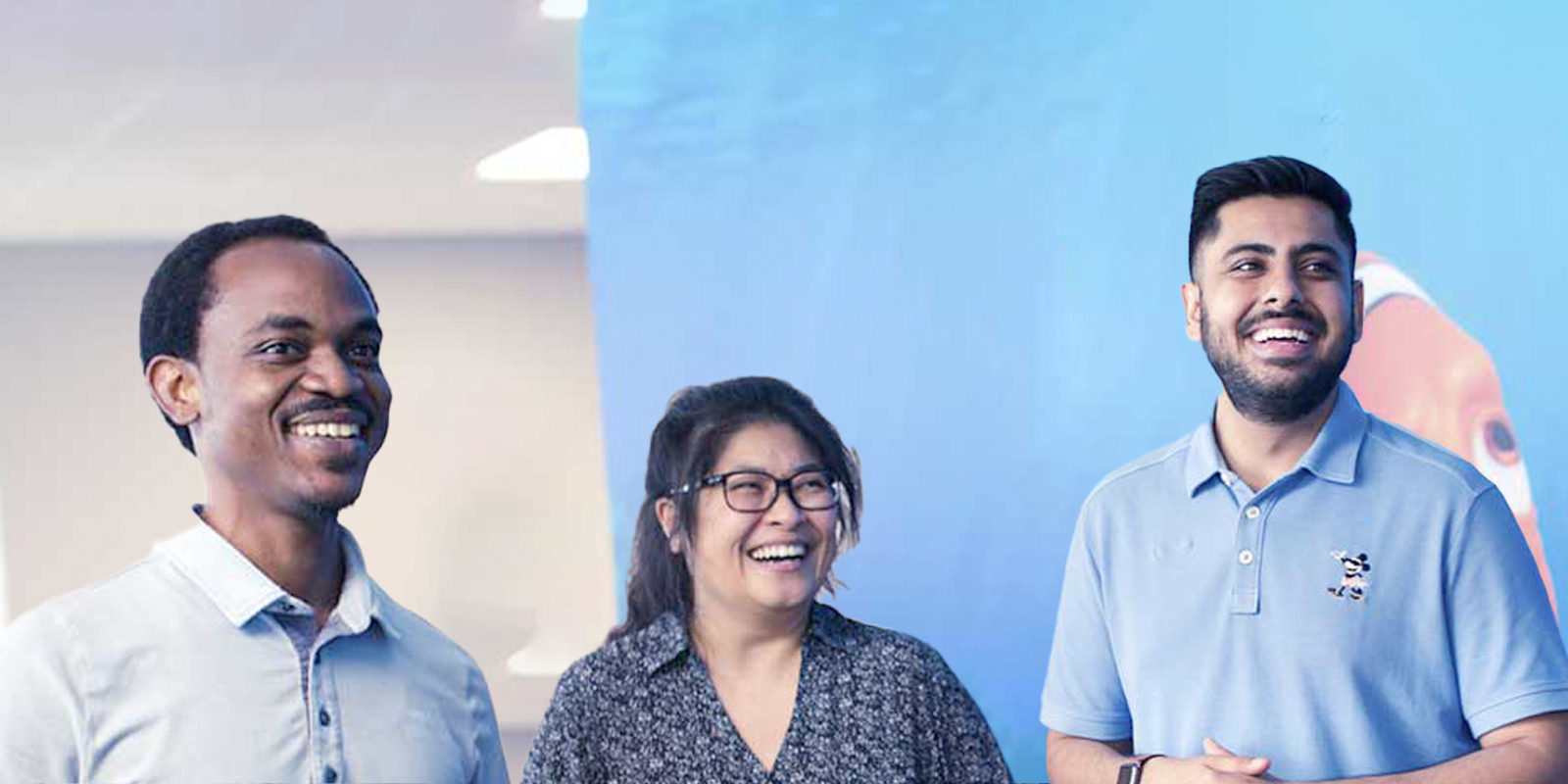- The Un-Employer
- Posts
- 4 practical tips to improve your job search
4 practical tips to improve your job search
Some practices and tips that help me whether I'm actively looking for a new role or not

Something funny with my audio so I uploaded my narration video. You can watch & listen right here 👇

Intro
There are hundreds of tips that I’m sure you’ve seen many times if you’ve looked for a job recently, but I want to focus on a few that have actually helped me land roles at companies like Mailchimp and Paramount. I’ll also share an example where I made a mistake that cost me a job at Netflix 🤦♂️

Schitts Creek
1. Tailor your resume for each job
But, Nick, this takes so much timeeeeee. Yeah, it does, relax. If the job search was quick and easy, I’d have a full-time role right now and would not have created this newsletter!
Tip #1 can be summed up in three words—Applicant Tracking System.
Applicant Tracking Systems (ATS for short) are the first lines of defense companies use when it comes to filtering candidates who are qualified for a job from those who aren’t and managing the hiring process.
They look to match things like years of experience, keywords from your job experience, and maybe even your location if the role is in the office.
Next, I adjust sentence structure, phrases, or words in my resume to match how it’s written in the job description. Once you feel you’re in a good place, export that beautiful resume and feel more confident when applying!
Does it take more time? Yes. Does it guarantee getting passed an ATS? No. Is it worth it anyway? Yes
Tip #1 Tailor your resume TL;DR:
Why this is important: It’s important to tailor your resume for each job because it increases your odds of getting past those cheeky (I was in London last month) applicant tracking systems.
How do I do this? I’m glad you asked. One trick I use when applying to jobs is copying the qualifications and requirements into Figma which is where my resume design lives. You can also use Google Sheets, or Microsoft Word if you’re into that kind of thing, or whatever else you want.
2. Use your network
Tip #2 can also be summed up in three words but that’s because the entire tip title is three words. Use your network.
I understand that not everyone is an extrovert or enjoys posting and sharing things about themselves. I find that people especially feel weird about posting on LinkedIn. There’s a blurry line sometimes between what counts as “professional content” or something that is “too personal” to be sharing on there.
I believe that the line is slightly subjective, and I lean toward sharing updates about my professional work, contracting, and side projects, and the frequent random thought or frustration with some terrible app with even worse UX.
Over 7-8 years of sharing fairly inconsistently, I’ve reached the point where I have people I’m connected with but don’t know personally referring me to open roles even when I’m not looking—but let’s move on.
The good news is that you don’t have to be a regular poster on LinkedIn to have a strong network. Though, if you’ve been struggling to gain traction in your search, I encourage you to at least engage on the platform. Follow some people in your industry, like some posts, write a comment, share something yourself?
Don’t underestimate the willingness most people have when it comes to helping those who need it.
Tip #2 Use your network TL;DR:
Why this is important: I’ve received so many introductions and job referrals from people that I’m connected with but don’t know. You don’t need to post every day to get to this poitn.
How do I do this? I’m glad you asked. One trick I use when applying to jobs is copying the qualifications and requirements into Figma which is where my resume design lives. You can also use Google Sheets, or Microsoft Word if you’re into that kind of thing, or whatever else you want.

Gif by 901FPV on Giphy
3. Practice, practice some more, practice again.
Tip #3 is to practice your presentations, questions, and answers.
You don’t know how much it pains me to write this. It hurts so much because it wasn’t until this past job search that I really, and I mean really started practicing interviewing. I’d time myself presenting my work to keep it within a certain amount of time and would sometimes even record myself to see how I sound. It’s awkward, but the pros very much outweigh the cons.
I’ve been on both ends of the interview process and the thing that is easiest for me to notice is when someone isn’t prepared. Nerves are one thing (I’ll get to that shortly), but unpreparedness can kill your chances of getting an offer very quickly.
Practicing for behavioral questions
For those who don’t need practice, I envy you, but you can skip to tip #4 if you’d like. For the rest of us, and specifically for those who benefit from a little bit of structure, brush up on your STAR responses.
The STAR method is a structured approach at responding to behavioral questions by talking about the Situation (context or background of the challenge or experience), Task (your specific responsibility), Action (the steps you took to address the challenge or complete the task), and Result (the positive outcomes of your actions).
Practicing for design challenges
The design challenge is where I messed up during my Netflix interview and didn’t get the job. However, it wasn’t due to a lack of practice. I’ll get to it in the fourth and final tip.
I absolutely hate design challenges, but I understand why companies make candidates do them. They provide an opportunity to see how someone thinks, processes, and reacts to a scenario that would otherwise be left to the imagination based on how they present their work.
The best tip I could give you for practicing design challenges is to write a basic script that outlines the important aspects of the project(s) that you will share. Memorizing talking points can make the presentation flow more smoothly.
Tip #3 Practice TL;DR:
Why this is important: The best way to become a better interviewer is to interview more. There’s no way around it. The second best way is to practice!
How do I do this? If you are having trouble getting interviews, try recording some of your responses or presentations. I’ve also found YouTube to be insanely helpful when I was deep in my job search. If you’re not familiar and think it sounds weird to watch people tell you how to interview, it does, but it helps.
4. Calming nerves
Interviewing comes with an inherent power dynamic that you pretend doesn’t exist. Whether you like it or not, the interviewees and your interview skills are the two things that determine whether you move forward in the process and get an offer or go back to the drawing board and start over with another company.
If you have anxiety, anything you can do to relieve it leading up to the interview will be helpful. If you don’t have anxiety, you might still have some habits or routines that help you feel more prepared in the moment.
For me, it’s the feeling of being prepared. If I go into an interview feeling like I’m unprepared for certain questions, I notice a drastic shift in my confidence in the conversation and interview as a whole.
Preparedness looks like a few things to me:
I like to understand the business as a whole and know things like the amount of customers they have, what type of customers are they, how’s their funding or revenue, etc.
As a designer, I need to learn a bit about their design teams and practice. Is it a company that leads with good design and UX or does design not really have a seat at the table?
The latter doesn’t happen to me often because I do all of the digging before applying. I’m very specific about what I’m looking for and don’t want to apply everywhere.
STAR method responses
Refining my presentations
Now let’s talk about where I f***ed up with Netflix. It was the design challenge.
I’ve done so many design challenges and researched how Netflix structures theirs that I felt confident going into it. It was going great, but once we got into the actual challenge. I felt my confidence getting lower and lower.
What caught me off guard was the structure. This was surprising to me because it was a similar format to the challenge I did that got me the job at Mailchimp. I met with three interviewers and had to choose an app, identify existing pain points, and ideate on solutions for 30-minutes. Then, I had an hour to myself to design them before presenting.
Where I failed was at time management. An hour isn’t much time, but I focused on a broad range of ideas that were discussed as opposed to going more narrow. It was that, and forgetting to mention an important idea that I brought up earlier in the interview that led to me not moving forward.
I chalk it up to it being my first big interview after being laid off, but it still sucked. Sometimes it’s nice to know what it was that stopped you from moving forward, but it never feels good if it was something that you could control. The silver lining there is that I know what I need to do in future interviews.
Tip #4 Calming nerves TL;DR:
Why this is important: It’s easy to feel anxious during a job interview and there isn’t one way that will help everyone.
How do I do this? For me, it’s being prepared and having a routine. For others, it could be breathwork, meditation, tea, or anything else.
Open product, design, and engineering jobs
Thank you
I like writing and sharing my experiences, so thank you for taking the time to read through this. As always, you can find me on LinkedIn. Feel free to reach out with any questions, comments, or feedback as I look to write about relevant topics.





